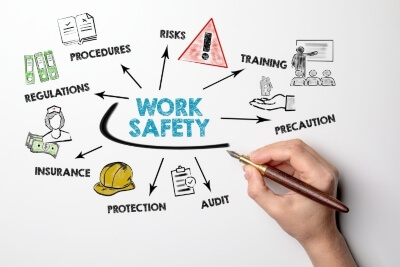Pandemic Watch: Retroactively Amended ESA Obligations?
Jun 19, 2020 COVID-19, Human Resources, OpinionEmployers are waiting with bated breath (that’s right I slipped in some good old Shakespeare) to find out when they can reopen, what their new occupational health and safety obligations will be, and really when they will be able to return to business as “normal.”

I, however, have been sitting back and thinking about how this currently affects employment agreements.
Now if you have been reading this blog for any length of time, it would have been noticed that I specialize in occupational health and safety. I am however; an HR professional, which means I also find all elements of the HR umbrella fascinating.
This pandemic has provided no shortage of questions for my own interest as well as implications for employers. So sit back, relax, and follow along as I explain the title of this post.
Canadian Legal Information Institute
Now, if you are like me, you are aware of the typical nature of the employment relationship. An employee as defined by the ESA is someone who performs work for wages, and the employer as the entity responsible for that employment.
What governs that relationship is a contract. So, the variable in all workplaces is that contract. It spells out what one can, and cannot do to each other.
What I find an amusing fact is that both parties sign it, and don’t always pay attention to it.
That’s why there are so many examples to read on CanLII (Canadian Legal Information Institute) of what not to do in your workplace. Example being making a voodoo doll of your boss and posting it to social media, bad call.
To compare it to our regularly scheduled program of occupational health and safety, it is like reading the Ministry of Labour, Training and Skills Development newsroom postings about accident investigations.
Safety law is also found on CanLII if you are so inclined. The importance of this contract is that how your business chooses to handle staffing issues could have been a violation of that agreement.
In Ontario and BC, employers have the ability to negotiate a “temporary layoff” into that agreement, which provides employers with a nice buffer zone of 13 weeks to deal with unexpected situations such as we find ourselves in with this pandemic.
At a time where organizations can be struggling with cash flow issues, it is nice to know that you do not have to worry about notice or severance payments under both the ESA and common law, provided the employer actually had a provision for a “temporary layoff” before the world came screeching to halt.
If no such agreement was in place, and for many of the small to medium sized businesses that make up a large percentage of Ontario’s economic landscape, I believe there is a real possibility of this being the case – we enter into a territory no employer wants to find themselves in – constructive dismissal.
Whichever position you find yourself in, there are challenges.
Now if you are reading this, silently thanking me for all the good news I have just shared, you’re welcome. You either were not allowed to lay-off or should have paid out, or your number of weeks remaining before you have to recall employees or sever (and pay) the employment relationship is disappearing, all the while the prospect of revenue is still off in the distance.
Rock, meet hard place.
Enter the title of this post – “Retroactively Amended ESA Obligations”.
Now I am sure most of you are now into the routine of checking the news on a daily basis to see what either the Prime Minister or Premier have to say in their news briefings. What I am almost positive you didn’t hear mentioned was Ontario Regulation 228/20 for the ESA.
As HR professionals, employers, and workers there is a new leave in town we have to consider, it is called the Infectious Disease Emergency Leave.
Infectious Disease Emergency Leave

The Infectious Disease Emergency Leave was put on e-Laws on May 29th, 2020 – so it is really new.
Like any other leave such as bereavement, sickness, and maternity – it provides workers with job protected leaves of absence while tending to other obligations. This leave is no different. If you read the regulation it states that is retroactively applicable as per S. 3 of O. Reg 228, and will last until 6 weeks after the emergency orders have ended.
This is good news for employers in both the above mentioned situations. It is like the government has swooped in and turned back the clock. No one was illegally laid off… you have been on a job protected unpaid leave!
Only a few weeks left before you have to pay out notice and severance? No, no, no… they have also been on a job protected unpaid leave and not temporarily laid off! Unsure of when you will be permitted to re-open? Not to worry – the leave doesn’t end until 6 weeks from when the emergency orders do!
All is right in the employment world.
Now this doesn’t affect permanent layoffs or dismissals before May 29th 2020 as per S. 6(2) S. 3 of O. Reg 228. From my HR standpoint what I find most interesting is that it actually limits claims of constructive dismissal (S. 7(1) S. 3 of O. Reg 228).
Now I am not a lawyer, I do not give legal advice, but from my working knowledge of employment law this is different. As time progresses and the courts start hearing matters in the wake of the “Covid-19 Period” it will be very interesting to see how this plays out in the end.
You may be asking, where does this leave us? Well, in a better place than before.
Payroll usually makes up between 40-70% of your operating budget depending on your organization. The challenges with employment relationships are never easy to deal with personally or financially.
What a leave like this creates is an element of certainty for employers, their employment agreements remain intact – now we can start to rebuild. For employees like myself, I know with the uncertainty of our times and the changes to the labour market – I have a job to go back to once this all ends, which may be the case for others as well.
To wrap up, let’s think positively from now on.
The restrictions are slowly easing – regionally at least. As time passes and infection numbers go down, more and more business will be allowed to operate again.
Your clients will start needing your products or services, and we will enter a new normal. What that will look like? No one knows exactly, but we have a good foundation to start with.
Employers and employees will have to work together to get ready to open once the time comes. Safety which was always your first priority hasn’t changed, we just have a new hazard that has been identified.
Time to perform a risk assessment specific to your workplace in regards to Covid-19, you should be familiar with risk assessments as you have completed one specific to violence and harassment. If you need a little help, here is our template.
This will identify sources of exposure and prepare your organization to implement appropriate control measures. Suggestions being, a pre-start screening for workers and visitors to your facility, following the published guidelines as set by the provincial government for your industry, workplace redesign to accommodate physical distancing, and options for PPE such as face coverings or gloves to name a few.
Once determined what is suitable for your workplace, train workers on these new controls, and always ensure you evaluate the effectiveness of your controls.
Geoff Rowatt | CHRP | Safety Trainer






